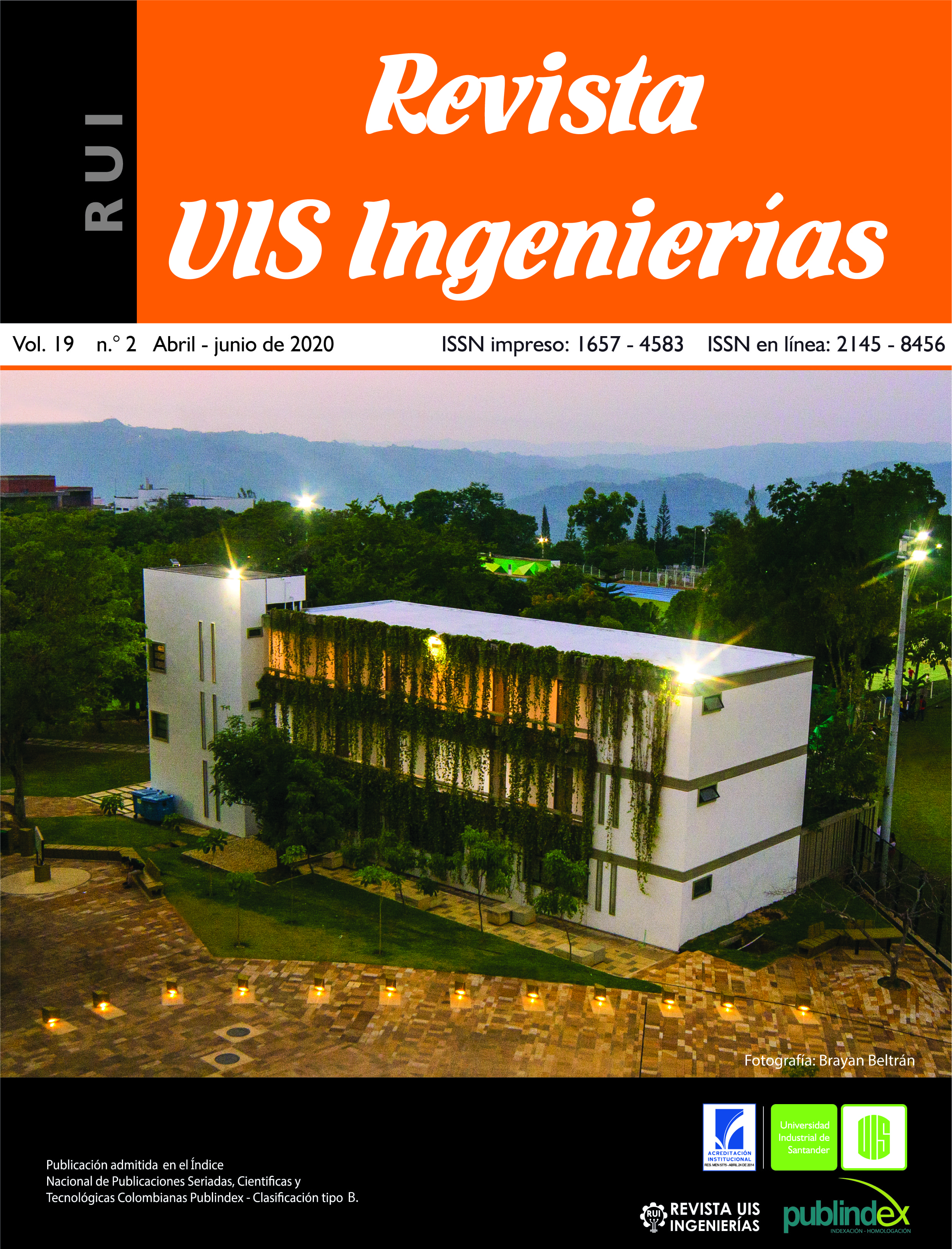Publicado 2020-03-16
Palabras clave
- agricultura,
- robótica móvil,
- modelación,
- guiado autónomo,
- sistemas embebidos
- robot diferencial ...Más
Cómo citar
Derechos de autor 2020 Revista UIS Ingenierías

Esta obra está bajo una licencia internacional Creative Commons Atribución-SinDerivadas 4.0.
Resumen
En la creciente demanda de alimentos a nivel mundial, se hace necesario enfocar los esfuerzos en desarrollos que aporten a la optimización de recursos para maximizar la producción en los cultivos. Para esto, la tecnología se muestra como una posibilidad de afrontar estos retos, siendo de interés el automatizar los procesos que implican una plantación. Entre las diferentes tareas del agro, como lo son la remoción de maleza, aplicación de nutrientes o de fungicidas, los robots móviles se muestran con un uso potencial para asistirlas. Así, desde el presente trabajo se aborda el control de velocidad de desplazamiento de una plataforma móvil en configuración diferencial, dedicada a labores de agricultura de precisión. Concretamente se aborda el modelado matemático, diseño de controles bajo la técnica de retroalimentación de estado y su integración a los sistemas embarcados en el robot, donde mediante simulaciones de Hardware en el lazo (HIL) se realizan pruebas de validación, usando el entorno de ROS, sistemas embebidos y simulaciones matemáticas, previas a la puesta en funcionamiento del prototipo real. Mostrando una integración exitosa con el esquema propuesto, con el fin de realizar pruebas previas en robots móviles.
Descargas
Referencias
[2] Y. Nagasaka, N. Umeda, Y. Kanetai, K. Taniwaki, Y. Sasaki, “Autonomous guidance for rice transplanting using global positioning and gyroscopes,” Comput. Electron. Agric., vol. 43, no. 3, pp. 223–234, doi: 10.1016/j.compag.2004.01.005
[3] B. T. van Zanten et al., “European agricultural landscapes, common agricultural policy and ecosystem services: a review,” Agron. Sustain. Dev., vol. 34, no. 2, pp. 309–325, 2014, doi:10.1007/s13593-013-0183-4
[4] S. A. Hiremath, G. W. A. M. van der Heijden, F. K. van Evert, A. Stein, C. J. F. Ter Braak, “Laser range finder model for autonomous navigation of a robot in a maize field using a particle filter,” Comput. Electron. Agric., vol. 100, pp. 41–50, doi: 10.1016/j.compag.2013.10.005
[5] Avital Bechar, “Robotics in horticultural field production,” Stewart Postharvest Rev., vol. 6, no. 3, pp. 1–11, 2010, doi: 10.2212/spr.2010.3.11
[6] K. H. Choi, S. K. Han, S. H. Han, K.-H. Park, K.-S. Kim, S. Kim, “Morphology-based guidance line extraction for an autonomous weeding robot in paddy fields,” Comput. Electron. Agric., vol. 113, pp. 266–274, 2015, doi: 10.1016/j.compag.2015.02.014
[7] S. N. Young, E. Kayacan, and J. M. Peschel, “Design and field evaluation of a ground robot for high-throughput phenotyping of energy sorghum,” Precis. Agric., vol. 20, no. 4, pp. 697–722, 2019, doi: 10.1007/s11119-018-9601-6
[8] P. F. Martin Gomez, O. S. Hernandez Mendoza, “Fertilizer dosage vehicle via global positioning system with technology for small productions,” in 2014 III International Congress of Engineering Mechatronics and Automation (CIIMA), 2014, pp. 1–5, doi: 10.1109/CIIMA.2014.6983457
[9] A. Koubaa, Ed., Robot Operating System (ROS), vol. 625. Cham: Springer International Publishing, 2016.
[10] H. W. Griepentrog, C. L. Dühring Jaeger, D. S. Paraforos, “Robots for Field Operations with Comprehensive Multilayer Control,” KI - Künstliche Intelligenz, vol. 27, no. 4, pp. 325–333, 2013, doi: 10.1007/s13218-013-0266-z
[11] Z. Wang, L. Gong, Q. Chen, Y. Li, C. Liu, Y. Huang, “Rapid Developing the Simulation and Control Systems for a Multifunctional Autonomous Agricultural Robot with ROS,” 2016, pp. 26–39.
[12] J. Khan, “A Standardized Process Flow for Creating and Maintaining Component Level Hardware in the Loop Simulation Test Bench,” in SAE Technical Papers, 2016, vol. 2016-April, no. April, doi: 10.4271/2016-01-0052
[13] P. Wältermann, H. Schütte, K. Diekstall, “Hardware-in-the-loop testing of Distributed Electronic Systems,” ATZ Worldw., vol. 106, no. 5, pp. 6–10, May 2004, doi: 10.1007/BF03224664
[14] C. Liu, B. Chen, M. Cheng, A. Champagne, K. Patel, “Model Integration and Hardware-in-the-Loop (HiL) Simulation Design for the Testing of Electric Power Steering Controllers,” SAE Technical Papers, 2016, doi: 10.4271/2016-01-0029.2016
[15] S. Taheri, C. Sandu, S. Taheri, E. Pinto, D. Gorsich, “A technical survey on Terramechanics models for tire–terrain interaction used in modeling and simulation of wheeled vehicles,” J. Terramechanics, vol. 57, pp. 1–22, 2015, doi: 10.1016/j.jterra.2014.08.003
[16] L. Ljung, “System Identification,” in Wiley Encyclopedia of Electrical and Electronics Engineering, Hoboken, NJ, USA: John Wiley & Sons, Inc., 2017, pp. 1–19, doi: 10.1002/047134608X.W1046

